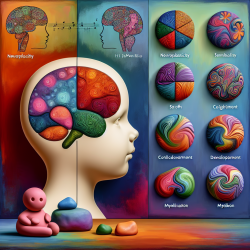Introduction
In the field of mental health, disparities in care and outcomes are a significant concern, particularly among racial and ethnic minority groups. The research article "A two-way street: bridging implementation science and cultural adaptations of mental health treatments" by Cabassa and Baumann (2013) presents a compelling argument for integrating implementation science (IS) and cultural adaptations (CA) to address these disparities. This blog post explores how practitioners can leverage these insights to improve their practice and enhance outcomes for diverse populations.
The Intersection of Implementation Science and Cultural Adaptations
Implementation science focuses on the methods to promote the integration of research findings into healthcare practice. Cultural adaptations, on the other hand, involve modifying evidence-based treatments (EBTs) to align with the cultural values, language, and context of the target population. The integration of these fields can enhance the relevance, acceptability, and effectiveness of mental health treatments.
Key Insights for Practitioners
- Making Culture Visible: Practitioners should document the adaptation process, making cultural elements explicit in the implementation of EBTs. This involves collaborating with stakeholders to ensure treatments are culturally congruent and relevant.
- Balancing Adaptation and Fidelity: While adaptations are necessary to fit local contexts, maintaining the core elements of EBTs is crucial to preserving their effectiveness. Practitioners should identify which aspects of a treatment can be adapted without compromising its core functions.
- Identifying Key Players: The roles of facilitators and cultural adaptation specialists (CAS) are vital in the implementation process. Practitioners should consider collaborative approaches that leverage the strengths of both roles to enhance treatment uptake and sustainability.
- Expanding the Contextual Lens: Understanding the broader ecological context, including organizational and community factors, is essential. Practitioners should assess these factors to develop tailored implementation strategies that address specific community needs.
Encouraging Further Research
While the integration of IS and CA offers promising avenues for reducing mental health disparities, further research is needed to refine these approaches. Practitioners are encouraged to engage in research that explores the impact of cultural adaptations on treatment outcomes and the effectiveness of different implementation strategies.
Conclusion
By bridging the gap between implementation science and cultural adaptations, practitioners can enhance the delivery of mental health services to diverse populations. This integrated approach not only improves the relevance and effectiveness of treatments but also contributes to reducing disparities in mental health care.
To read the original research paper, please follow this link: A two-way street: bridging implementation science and cultural adaptations of mental health treatments.










